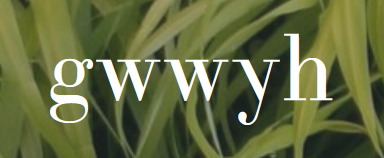Foliage Fireworks: Bring the wow into the new year with 6 enduring shrubs
This years Christmas tree sparked thoughts about foliage. Talk about foliage you can’t count on! The slightest movement causes mine to rain needles all over the place - a real disappointment. At this rate, the poor thing may not make it through the holidays intact.
But back to foliage. Outside, there is more enduring beauty to be found in the world of shrubs. Flowers come and go, but a garden with interesting foliage remains so until late into the season. So rather than grieve any more over the shedding tree, I’ll focus on six of this years favorites.
Here’s one I wouldn’t be without.
1. Spirea thunbergii ‘Ogon’ is an unsung hero that doesn’t get nearly enough attention. As far as I’m concerned, this shrubs merit is all about the leaves. Glowing orange foliage brightens up the landscape at a time when there isn’t much color to be found. It produces insignificant white flowers in early May but during the summer months, the delicate golden leaves liven up the garden. It is easy to grow and maintain (zone 4-8).
2. Hydrangea macrophylla ‘Eclipse’ is a striking new hydrangea I planted this summer. The dark leaf color was impressive, it didn’t fade as summer progressed and the bright pink flowers were prolific and long lasting.
I transplanted it into the garden at the end of the summer. Maturing at 3-5 ft, it seems a good choice for the shrub/perennial border in the side yard. It’s in the Macrophylla family, so I’m not sure I can count on it to flower again in my zone 5 garden (zone 5-8). Still, I would be happy enough with the foliage!
3. Salix candida ‘Jefberg’ ‘Iceberg Alley’ is a dear little gem I saw on a trip to the Bailey Nursery display gardens in Minnesota. Gray foliage on a deciduous shrub is so unexpected! When I got a closer look at its fuzzy delicate leaves, I knew I had to have it. This native shrub, discovered in Canada (zone 2-6) looks like a promising choice for just about any spot.
I put mine into a container (of course). All was well until I moved it into the garden (dryish soil conditions). I’m sorry to say it was a victim of my denial. I wanted it so badly I thought I could ignore the fact that it requires moist soil (after all it is in the willow family). Even though I watered constantly, the poor thing quickly dropped most of its leaves. I guess it’s back to the container. You know how it is - I must have it somewhere!
4. Ninebark (Physocarpus opulifolius) is one I’m a sucker for because I’m fond of magenta foliage. I’ve become disenchanted with the larger varieties, such as Physocarpus opulifolius ‘Diablo’ because they get unsightly powdery mildew and die back. I’ve had much better luck with smaller varieties. Physocarpus opulifolius ‘Tiny Wine’ and ‘Little Devil’ (below photos) are some favorites - just the right size for a small area (3-5’). The flowers in late June and early July are an added bonus.
Physocarpus opulifolius ‘Tiny Wine’ is tucked into a small border with Amsonia hubrichtii and Lavender. There are other diminutive varieties that I haven’t tried yet. If you want a hit of dark foliage for a smaller area, I encourage you to plant one.
5.Hypericum kalmianum ‘Blues Festival’ A fondness for gray foliaged plants led to this purchase (Aka St. Johns Wort) for a hot dry spot in my garden. I was taken in with the delicate ovate foliage and its diminutive size (2-3ft). This is a very tough plant (zones 3-9) that can withstand lean, dry soils. Surely a good addition to any type of perennial bed or border.
6. Spirea ‘Snow Storm’ Want a shrub you can’t kill, attractive gray foliage and outrageous flowers? This is it. Not at all demanding about its soil, hardy to zones 4-9 and not too big (3-5ft). It’s not fussy - I whack mine back (literally) every spring to keep it in check.
It’s the best in fall when the foliage turns to iridescent shades of magenta and orange.
Unlike the defoliating Christmas tree, these shrubs can be counted on to deliver. It’s something to consider after the holidays when you’re vacuuming up fallen needles and putting decorations away. Why not jazz up your garden in the new year and try a few?











